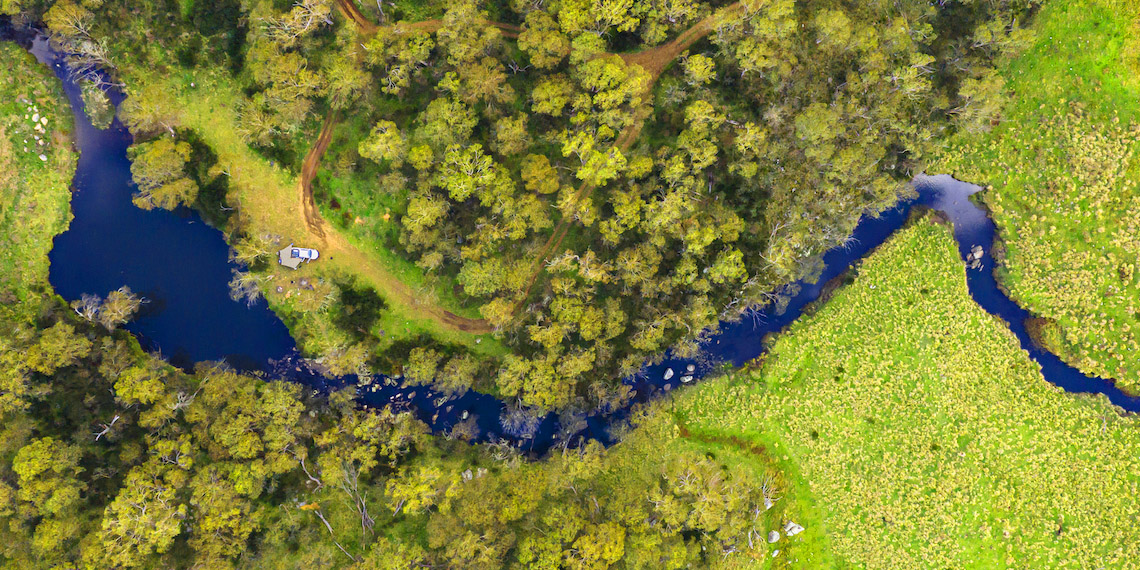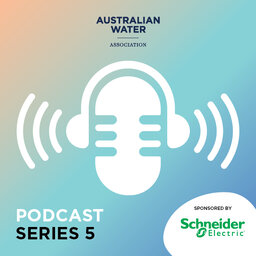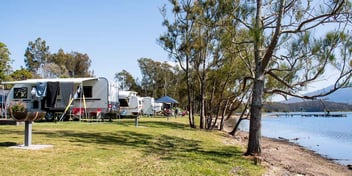Podcast – Water Quality in MidCoast Drinking Water Catchments - Impacts of Drought, Bushfires, Rain & Recovery

In the latest episode of our United by Water podcast, host Jo Taranto sits down with Judy Arasanilai (Water Quality Systems Officer at MidCoast Council) to discuss Water Quality in MidCoast Drinking Water Catchments - Impacts of Drought, Bushfires, Rain & Recovery.
The MidCoast area suffered a three-pronged climate attack with droughts, severe rainfall and bushfire affecting the local communities and impacting water sources including catchment and groundwater. Judy Arasanilai completed research on local catchments to better improve water conditions while abiding by the Australian Drinking Water Guidelines.
Listen below!
There’s been a situation where several severe weather events have placed the drinking water in your area under significant strain can you tell us a little bit about what happened over the period?
From when we had the first drought in the MidCoast Council area and then it was the hottest and driest year on record for us and all our drinking water catchments and the rivers ceased to flow by December. We also had the bush fires from October to December which was the worst bushfire wise in in Australia in terms of deaths and area affected.
All our catchments were affected by the bush fires and our biggest catchment is the Manning catchment which supplies our biggest customers. We have been using extensive groundwater supplies not only for drinking purposes but also to provide water for firefighting effects as well so when the rains were predicted for January, we needed the water.
How did you choose the testing sites?
We knew that two of our water supply drinking water catchments were affected by the fires, the Manning and the Crawford catchments and the Manning catchment is the biggest catchment and made up of several sub catchments.
The fires and the drought also affected vegetation, the soils become parched and then the fires came in and burned all the trays so now the catchments become even more erodible.
We also have metals and firefighting chemicals like fire suppression come into the waterways so if we extract the water, it presents challenges to our water treatment plants and processes. This is particularly crucial as when we supply the water to the customers, we have to comply to the Australian Drinking Water Guidelines so that we don't adversely affect the customers health.
We needed to go back and assess the risk and tweak our treatment processes so that’s why we needed to do the study, to find out whether we can mitigate these risks or whether we needed to go back and look for another water source. These three weather events happening in a row are a unique opportunity for us to study and plan for the future.
When you were doing the testing, did you expect the results to have a different combination of impacts than if you just had a drought, or fire, or heavy rain as opposed to almost all three in a tight succession, did that really skew what you saw?
Yes, the drought parched all the vegetation and soil as I mentioned prior so the water wouldn't flow through the soil, and it made the soil erodible. The bush fires led to all the ash and the vegetation is now gone because the vegetation would have held the soil together and filtered some of the contaminants but now the vegetation is gone as well and then the high intensity rain would have washed all these contaminants into the water. All three events had a devastating effect compared to if it was just individualised.
Was there anything surprising in the results?
With the Barrington catchment, we saw recovery at the second phase of our research, however surprisingly the Barrington and the Crawford River catchments during the initial results had peaks of nutrients and organic carbon which basically comes from the burnt vegetation. During the subsequent rainfall events, we saw a decrease in those contaminants, we still had a peak but not as high as the initial peak. We expected that everything would be washed into the sea after this rain event and the vegetation would regrow naturally but when we looked at the Barrington and the Crawford catchments, the peaks were different for each so that was the surprise but also, we didn’t see any metals in the water.
After we did the initial test, we optimised our water treatment processes and we increased our monitoring. We have an extensive network of reservoir and reticulation pipes so it's a big system, so we had to go in and put chlorine tablets in the reservoir. By doing this, we were able to supply safe drinking water to all the communities.
How will your findings help MidCoast Council plan for future water management strategies?
We can see that these events are going to become more frequent because our region is getting dryer and hotter while simultaneously, the rainfall events are becoming more intense and unpredictable as well. These events are going to be more frequent so what we've done is we’ve created a base for future work and identified the gaps as well so currently our Council is in the middle of doing integrated water cycle management strategy which means we look at the whole of the water supply system.
It’s a strategic plan so the Council are looking at where they may need extra dams or whether they need extra groundwater supplies. We've got all this information for the planning team who can use this information and plan accordingly. We've also got a water resilience team, so they are looking at making the systems more drought resilient because we also must consider the community.
The Council also have a Catchment Manning River Estuary and catchment management plan so that the communities receive good drinking water sources and they have also got our information, research, and results to utilise to make the drinking water catchments safer.
Thank you to Judy Arasanilai and Jo Taranto.
This podcast is proudly sponsored by Schneider Electric



